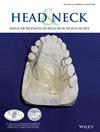Baseline weight recovery and mortality risk in head and neck cancer
Abstract
Background
As a surrogate of malnutrition, degree of weight loss and recovery from head and neck cancer (HNC) treatment is understudied. The influence of modifiable factors that affect weight, including speech/language pathology (SLP) and nutrition counseling, is also poorly defined. We characterize weight loss trends, baseline weight recovery (BWR), and the impact of interdisciplinary care on oncologic outcomes.
Methods
Retrospective cohort study assessing 266 newly diagnosed patients with HNC who completed curative-intent radiation (definitive or adjuvant) between January 2016 to January 2022. Relevant treatment factors were analyzed using multivariable Cox regression models.
Results
Altogether, 266 patients completed full-course radiation therapy (RT), encompassing definitive chemoRT (53.0%), surgery with chemoRT (18.4%), surgery with RT (17.7%), and RT alone (10.9%). Patient weight reached a nadir at median 3.0 months (IQR 3.0–11.3) after radiation, with a median weight loss of 12.6% (IQR 7.9–18.7). Notably, only 47.4% exhibited BWR. For those who recovered, median time to BWR was 10.5 months (IQR 3.0–24.0). On multivariable analysis, BWR by 6 months was significantly associated with overall survival (HR 0.28 [95% CI 0.10–0.76], p = 0.013), as was SLP consultation (HR 0.40 [95% CI 0.17–0.92], p = 0.031) and nutrition consultation (HR 0.34 [95% CI 0.13–0.89], p = 0.028).
Conclusion
A high proportion of patients with HNC fail to recover baseline weight after treatment; those that do can take longer than expected to return. Failure to recover baseline weight is associated with a notable decrease in survival. Similarly, SLP and nutrition consultation are independent, modifiable determinants correlated with outcomes, supporting the emphasis on multidisciplinary management. Measures to promote BWR may reduce mortality.

 求助内容:
求助内容: 应助结果提醒方式:
应助结果提醒方式:


